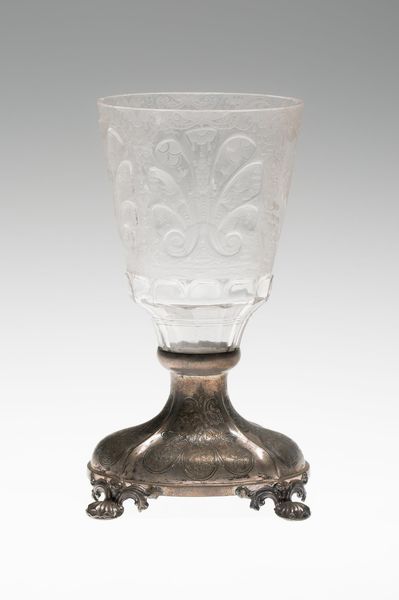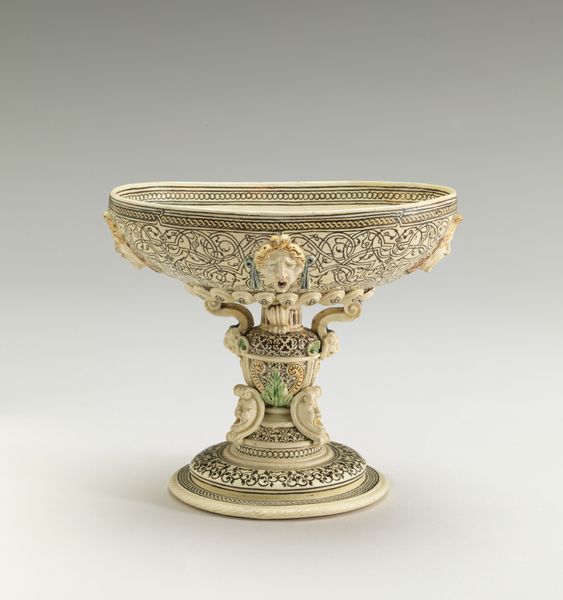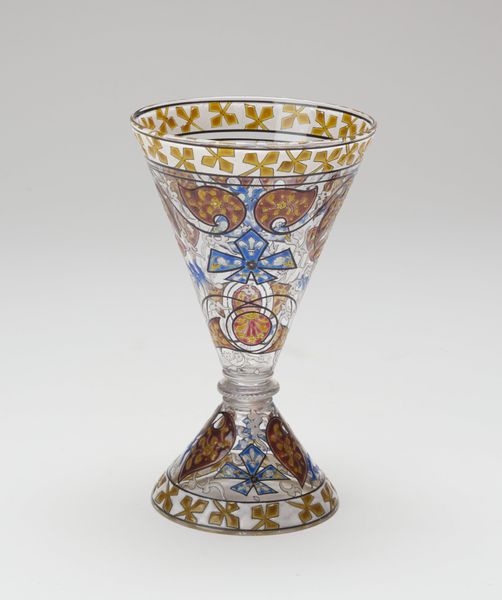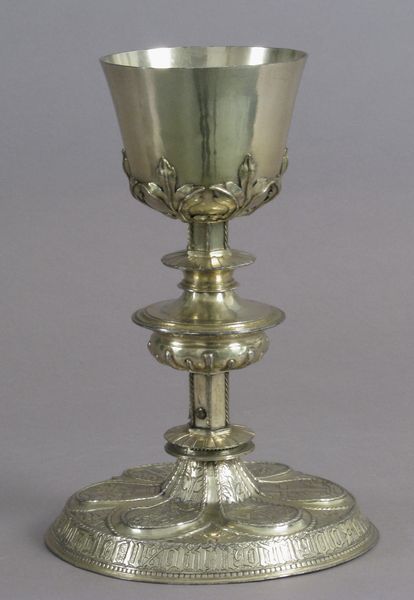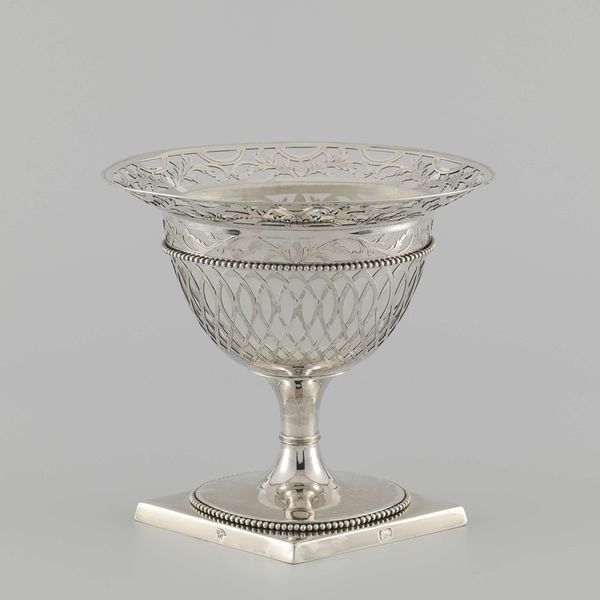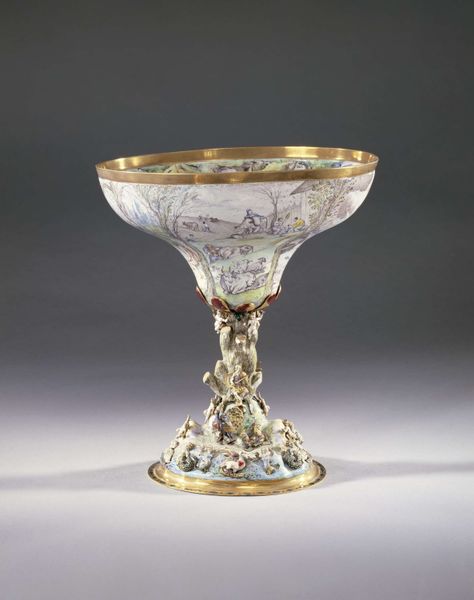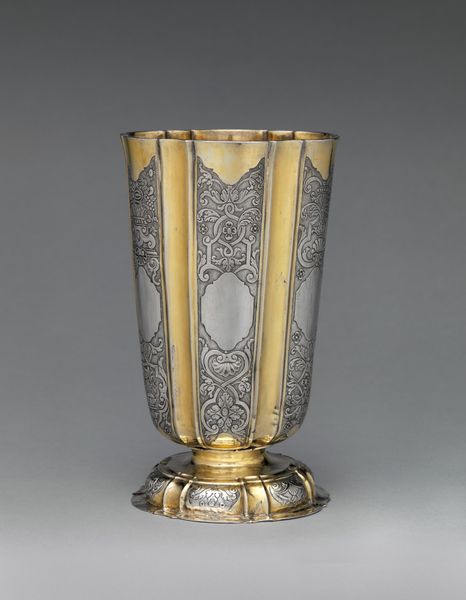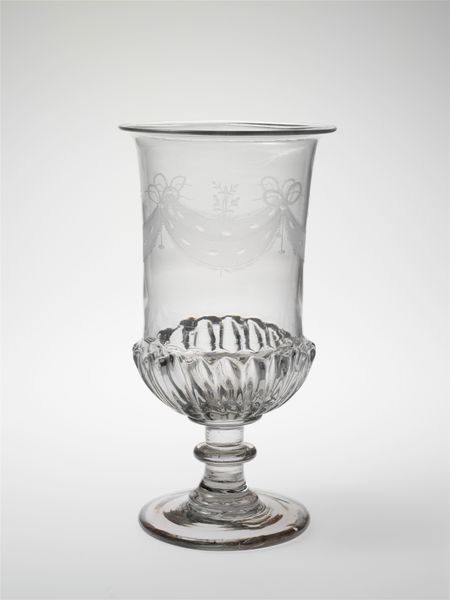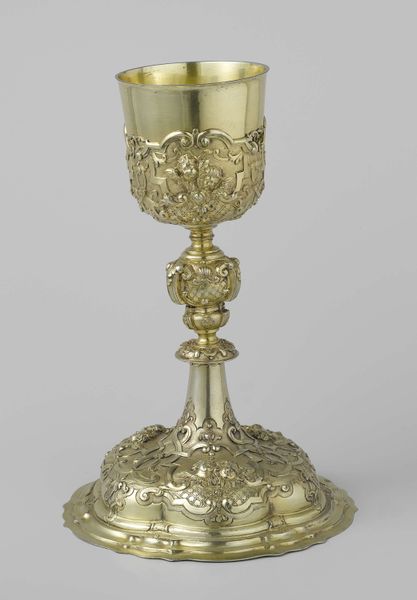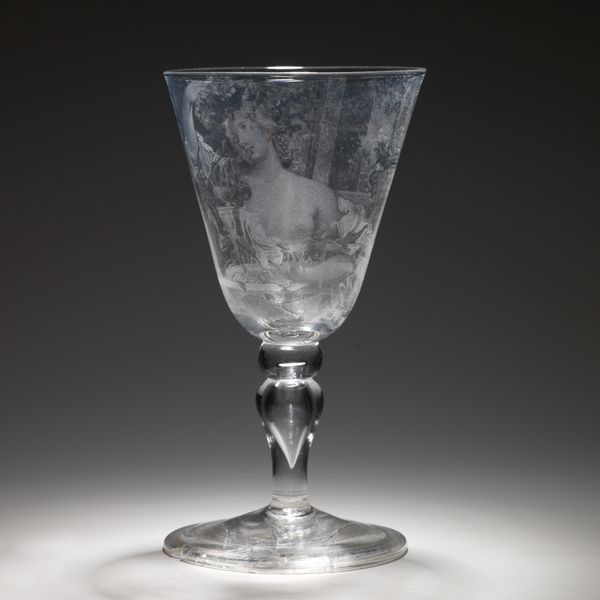
Dimensions: confirmed, diameter at rim: 7 3/4 × 4 7/8 in. (19.7 × 12.4 cm)
Copyright: Public Domain
Editor: This eye-catching "Goblet with lace design," made around the 1870s by Società Anonima per Azioni Salviati & C., really jumps out with its stunning color combination of deep emerald and brilliant gold! What stands out to me most is that intricate lace design around the rim. What do you make of this striking goblet? Curator: It’s tempting to simply admire the aesthetic beauty of this piece, isn’t it? However, thinking like a historian, it’s more useful to place it within its social context. Glassware like this wasn’t just functional, it was a marker of status, reflecting societal aspirations for elegance during the Victorian era, and the rising affluence of the middle class able to purchase decorative art. Editor: So, this goblet tells a story beyond its surface? Curator: Precisely! Consider the lace design. Real lace was incredibly expensive. By recreating this in glass, it democratized a luxury item, albeit in a different medium. Furthermore, the fact that Salviati & C. was a Venetian firm is important. The 19th century saw a revival of interest in Venetian glassmaking, consciously linking back to a glorious past for tourism and national identity-building purposes. Does that resonate with your impression? Editor: That's fascinating! I hadn’t thought about the relationship between design and social status so directly. So, it’s about more than just visual appeal – it represents aspirations and even national pride. I’m seeing how objects like this participated in a larger cultural narrative. Curator: Exactly! By understanding the historical forces that shaped its creation and reception, we can appreciate not only its beauty, but also its significance. Objects truly have their own biography, don’t they?
Comments
No comments
Be the first to comment and join the conversation on the ultimate creative platform.

